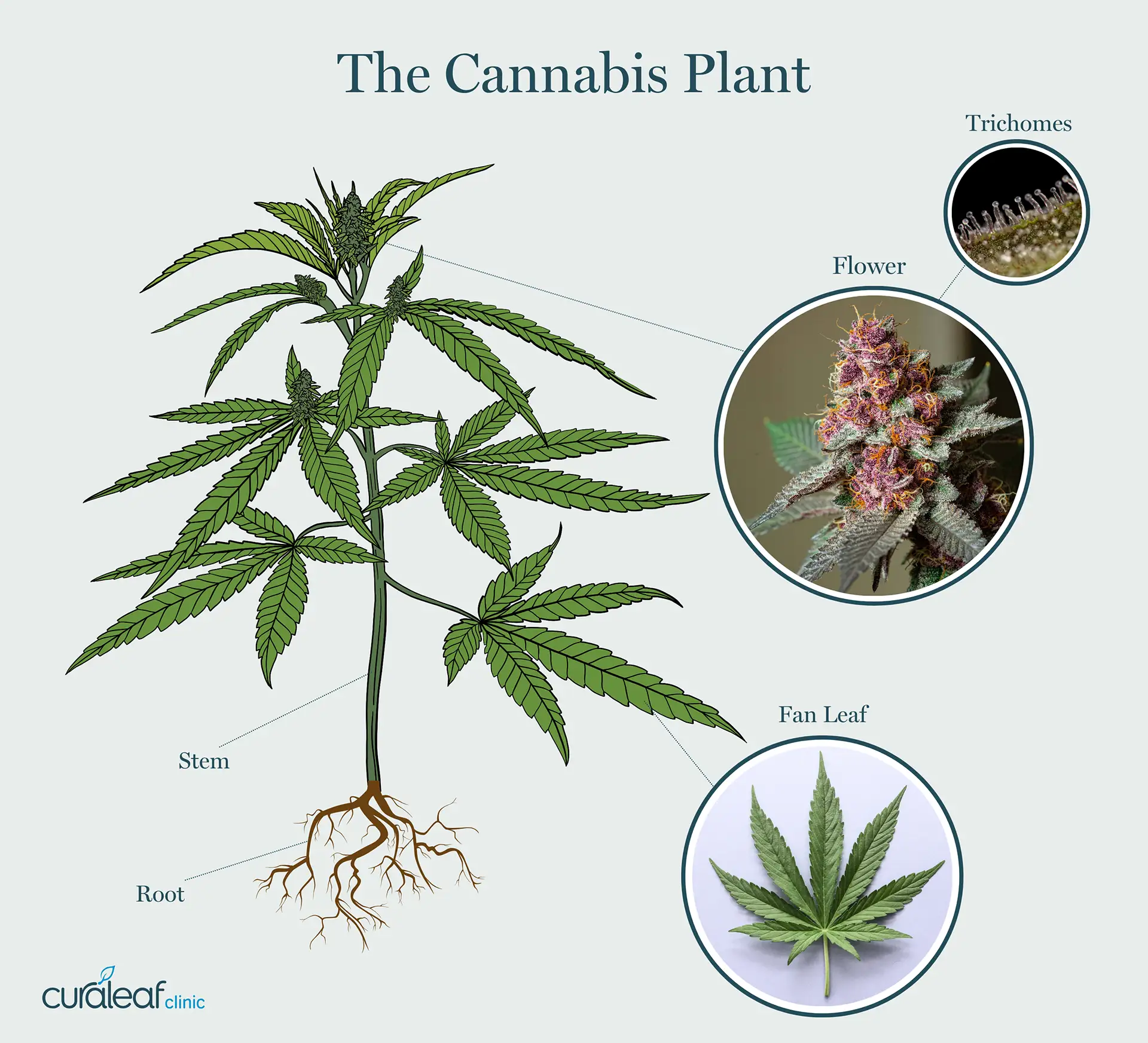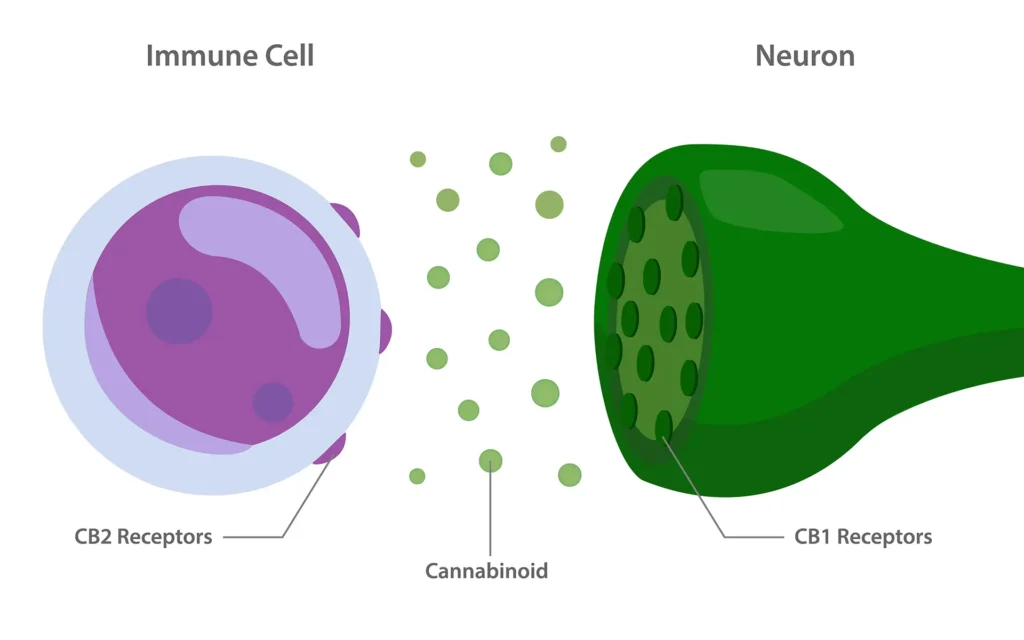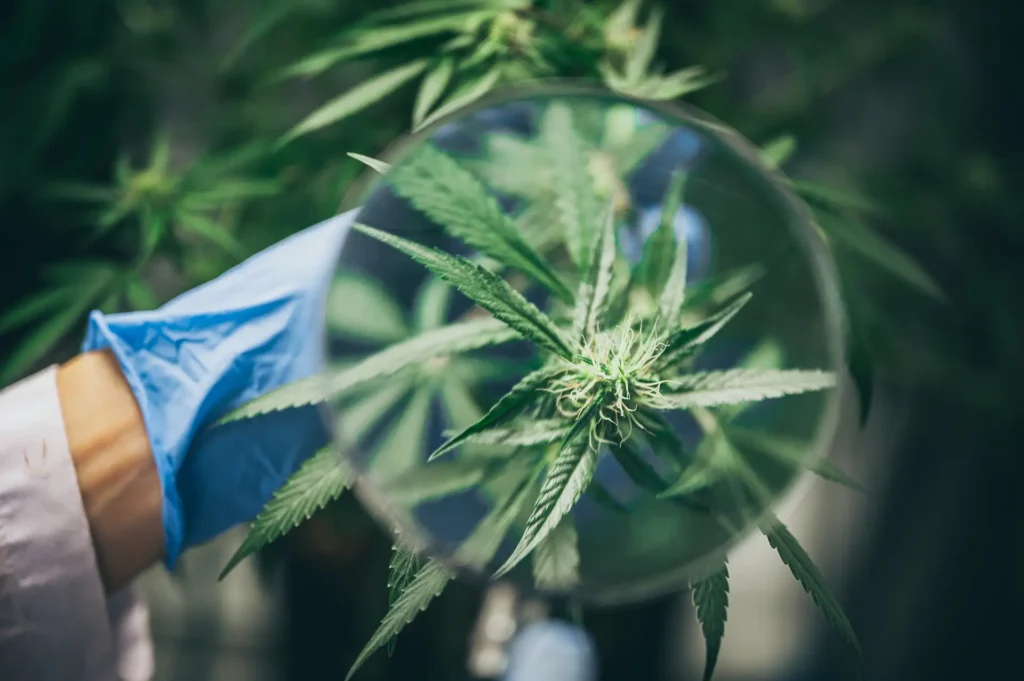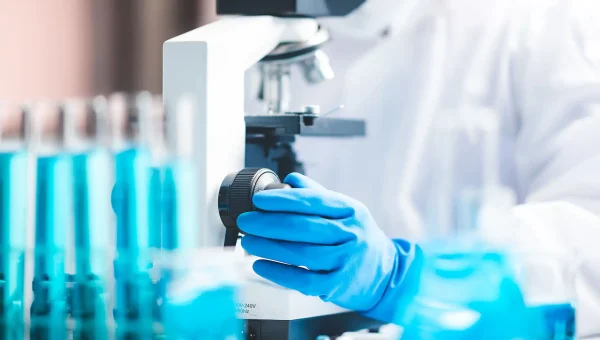Cannabis has been used for centuries, valued for everything from its medicinal potential to its role in textiles and food. But to truly understand cannabis, you need to look beyond its surface.
What is Cannabis
Cannabis is a flowering plant species that has been cultivated for thousands of years. It belongs to the Cannabaceae family and thrives in various climates worldwide. The plant’s distinctive fan-shaped leaves and resin-producing flowers make it easily recognisable.
Some botanists claim there are three main subspecies – cannabis sativa, indica, and ruderalis – however, others believe that ruderalis is a separate subspecies within the sativa classification. While each subspecies has unique characteristics, modern cultivation often blends these together to create hybrid plants with specific properties.
Throughout history, cannabis has been used in many ways:
- Medicine: Ancient cultures used cannabis for pain, nausea, and inflammation.
- Textiles: Hemp, a fibrous variety of cannabis, has been spun into rope, fabric, and sails for centuries.
- Food: Cannabis seeds have increasingly entered our diets in recent decades, due to their high-value nutrients, ground into flour or pressed for oil[1].
- Rituals: Cannabis has been used in religious and spiritual practices across different cultures.
Today, cannabis use remains varied, depending on where you are in the world. In the UK, it may be prescribed for certain chronic health conditions and is the subject of growing research on its medicinal effects.
Anatomy of the Cannabis Plant
The cannabis plant is as fascinating as it is complex, with each part playing a role in the compounds it produces. From its serrated leaves to the resin-coated flowers, cannabis is more than just a single substance – it’s a botanical marvel with a rich chemical profile.
Cannabis Leaves
The serrated, fan-like leaves of cannabis are one of its most recognisable features. While they contain small amounts of cannabinoids, they mainly contribute to photosynthesis and the plant’s overall chemistry. The leaves also have special chemicals called flavonoids, which can affect the colour of the leaves and help protect the plant from damage.
Cannabis Flowers
Cannabis flowers, or buds, contain the highest concentration of cannabinoids and terpenes. These compounds are produced in trichomes – tiny, crystal-like structures covering the surface of the flower. The density of these trichomes affects the plant’s aroma, potency, and potential effects.
Cannabis Stems and Roots
Cannabis stems are fibrous and have traditionally been used for textiles and paper. While they don’t produce significant amounts of cannabinoids, they provide the plant with structure. The roots have been explored for their potential anti-inflammatory properties, though they are not used in medical cannabis treatments.

Each part of the cannabis plant, from roots to flowers, contributes something unique and shapes its effects and potential uses.
The Compounds Within Cannabis
Cannabis is rich in naturally occurring compounds, each with distinct properties. Some can have an effect on the human body when consumed, while others contribute to the plant’s scent and flavour. These compounds work together to shape the effects of cannabis.
Cannabinoids
Cannabinoids are chemical compounds that interact with the body’s endocannabinoid system, which helps regulate mood, pain, appetite, and immunity. While over 140 cannabinoids have been identified, the two most widely studied are cannabidiol (CBD) and tetrahydrocannabinol (THC).
Cannabinoids are categorised into these three types:
- Phytocannabinoids: Found in cannabis, these compounds interact with the body’s receptors to influence various processes.
- Endocannabinoids: Naturally produced by the body to help regulate internal balance.
- Synthetic cannabinoids: Created in laboratories, often used in medical research and pharmaceuticals.
Cannabinoids primarily interact with two types of receptors:
- CB1 receptors, found in the brain and central nervous system, and influence mood, memory, and coordination.
- CB2 receptors, located in the immune system, and play a role in inflammation and pain regulation.

By working with these receptors and other systems in the body, cannabinoids may affect pain perception, mood regulation, and other physiological processes.
Terpenes
Terpenes are aromatic compounds found in cannabis and many other plants. These serve as a natural defence against pests. They not only create the cannabis plant’s distinctive scent but also play a role in how cannabinoids interact with the body. Some common terpenes in cannabis include pinene, humulene, limonene, linalool, and myrcene.
Flavonoids
Flavonoids are plant compounds responsible for pigmentation, scent, and flavour. Cannabis contains around 20 unique flavonoids.
Flavonoids have been studied for their potential antioxidant properties, but their effects in cannabis are still being researched. Currently, there is no clear evidence proving they have direct medical benefits.
Trichomes
Trichomes are the tiny, glandular structures that coat the surface of cannabis flowers. These resinous glands produce and store cannabinoids, terpenes, and flavonoids.
Trichomes appear as a sticky, frost-like layer on the buds, and their density often determines the potency of the plant. They act as the plant’s natural defence mechanism, deterring herbivores and protecting it from harsh environmental conditions.
Conclusion
Cannabis is a complex plant with a rich chemical profile. Its cannabinoids, terpenes, and flavonoids work together to create its unique effects, while its flowers, leaves, and roots contribute to its overall function and resilience.
At Curaleaf Clinic, we help patients understand medical cannabis and how it may fit into their treatment journey. If you’d like to learn more, our team of specialists are here to provide evidence-based guidance and support.
Check your eligibility for a consultation with Curaleaf Clinic by completing our free eligibility form today.
[1] Rizzo, G., Maximilian Andreas Storz and Gioacchino Calapai (2023). The Role of Hemp (Cannabis sativa L.) as a Functional Food in Vegetarian Nutrition. Foods, [online] 12(18), pp.3505–3505. doi:https://doi.org/10.3390/foods12183505.





